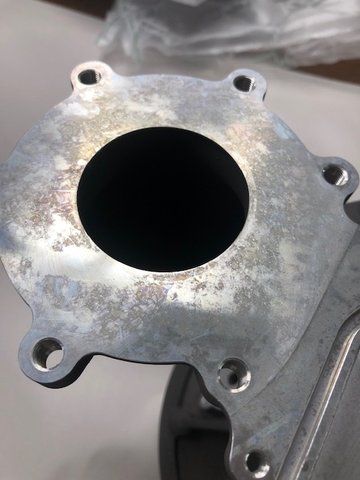Introduction
As the industry continues to change its dynamic, along with upgrades to machining capabilities, more and more designers are turning to machining as a preferred method to successfully apply a duplex treatment. Once the initial cost has been laid down and any quality issues worked through this option quickly becomes far cheaper than the original methods of masking. Designers have seen the repeatability of machining as a positive way to mitigate the usual quality issues found with complex masking such as; lacquer breakdown, misunderstanding of masking requirements etc.
Aluminium is a very reactive metal and has a strong affinity to react with oxygen and turn back into it’s natural state of aluminium oxide. If this bare surface is not sufficiently protected, depending on the conditions, an oxide layer will begin to form very quickly causing issues with the secondary treatment.
Usual Treatments
With single coating systems we can utilise an array of chemistry to clean and strip back the surface to a clean substrate. This involves us removing contamination (greases and soils) along with any aluminium oxide present on the surface. Across the industry, the most common method of this is an alkaline etch or a dichromate/ sulphuric acid de-oxidiser. These work in different ways, but ultimately achieve the same outcome in giving an active substrate for the conversion coating.
Chemical Pre-Treatment on bare surfaces
When it comes to our pre-treatment options prior to conversion coatings on bare surfaces as part of a duplex system, the chemistry that can be used is very limited. We are not able to use any de-oxidising chemistry as this could compromise the seal on any anodising present resulting in premature failure of the coating system. Because of this we are only able to soak the part in an aqueous mild degreaser and then treat. This obviously does not give any deoxidising capability.
Why did we not see this issue before?
In the past conversion coatings such as Alocrom had a safety net in the form of a low pH. This helps to “bite” into any oxide layer or scale and maintain an even coating. Newer REACH compliant coatings do not have this low pH and as a result struggle to effectively work to their full potential. As many of these conversion coatings have a visual element to them they tend to leave behind an unsightly stain. The efficiency of the reaction is inconsistent due to the surface chemistry contamination.
Explanation
As conversion coatings are effectively just a way of changing the surface chemistry of a component, if there is not a chemically uniform substrate the solution will react in different ways resulting in an uneven finish.
How to solve these issues
- Machinists should review how they package, store and protect parts after machining and before the second treatment. As explained above, this is much more important for bare surface treatments than whole part treatments.
- If oxidation is noticed at final inspection, perform a light abrasive polish before returning to us. Take care to meet any surface finish requirements.
- Return parts for secondary treatment with as little delay as possible after machining, limiting the amount of time the surface has to oxidise.
